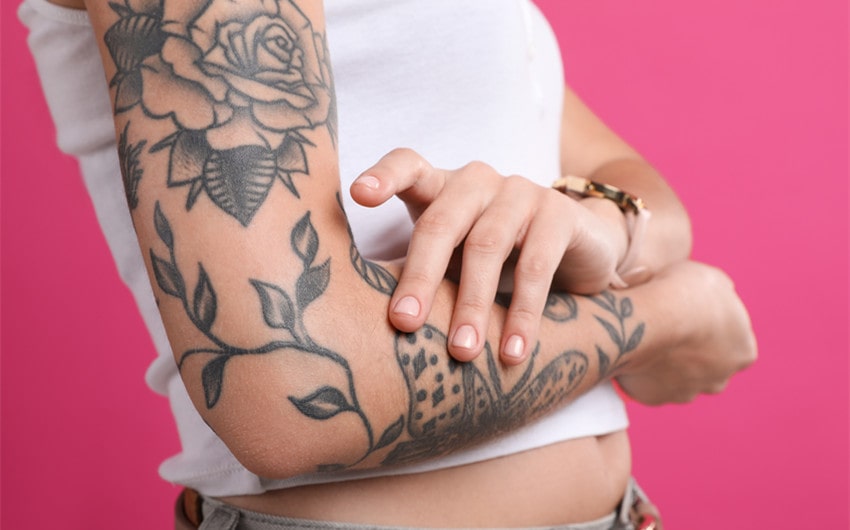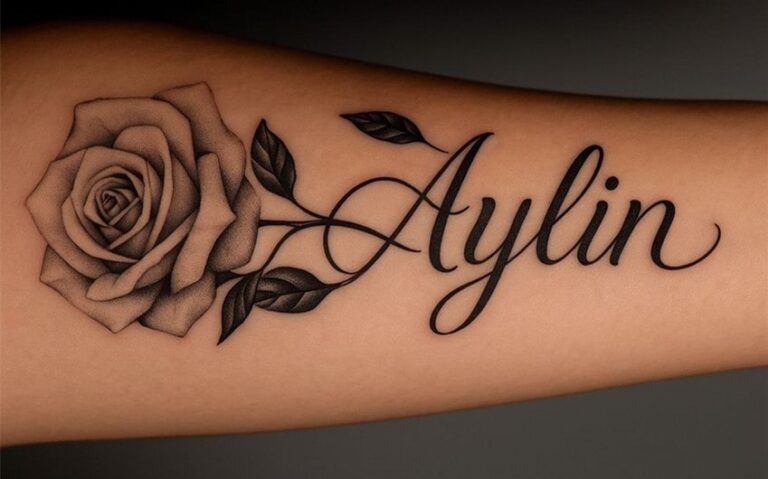120 Creative Tattoo Shading Filler Ideas to Enhance Your Ink Art
If you’re looking to make your tattoos flow seamlessly and look more cohesive, exploring tattoo shading filler ideas is the perfect way to elevate your ink. Shading fillers don’t just fill empty spaces — they enhance your tattoo’s depth, shape, and overall balance. Whether you’re blending existing designs into a sleeve, connecting separate pieces, or adding texture and movement, the right shading filler can turn your skin into a unified, striking canvas.
Best Tattoo Shading Filler Ideas
Tattoo shading fillers come in many forms, from subtle gradients to bold visual textures. They help create transitions between tattoos, fill empty areas naturally, and define your body art’s rhythm. Below are six distinct categories with detailed explanations and 20 creative, non-repetitive ideas in each to help you visualize how you can transform your tattoos into cohesive masterpieces.
A. Black and Grey Shading Fillers
Black and grey shading is the most classic and versatile filler technique. It creates smooth transitions, depth, and contrast without stealing attention from your main tattoos. Artists use different needle techniques to produce gradients that enhance realism or soften harsh outlines. This style suits nearly any tattoo genre — from realism to traditional — and works well for blending multiple pieces into a single composition.
Examples:
-
Soft gradient shading flowing between two portrait tattoos.
-
Smoky grey fade behind a large script design.
-
Black-to-grey transition forming a shadow around a rose.
-
Light grey mist linking two geometric tattoos.
-
Cloud-like fade around a skull for added realism.
-
Shaded background giving contrast to a black linework tattoo.
-
Feathered shading under a dragon design for depth.
-
Dark smoke effect connecting old-school flash tattoos.
-
Subtle shading behind wings to emphasize detail.
-
Grey-scale haze filling small empty gaps between tattoos.
-
Gradient fade blending sleeve tattoos into one composition.
-
Layered black shading to balance heavy blackwork sections.
-
Faint shadowing to smooth transitions near elbow tattoos.
-
Charcoal-like background behind an animal portrait.
-
Cloud-textured shading between floral pieces.
-
Light smoke filler along the wrist for a soft finish.
-
Shading shaped like sun rays behind a compass tattoo.
-
Black gradient fade enhancing an armor or mechanical design.
-
Grey haze surrounding traditional nautical imagery.
-
Deep black fade filling negative space under intricate linework.
B. Dotwork and Stipple Fillers
Dotwork fillers are ideal for creating subtle texture and balanced contrast without overwhelming your existing tattoos. Using thousands of tiny dots at varying densities, artists can achieve gradients, patterns, or soft transitions that feel organic and refined. This technique works especially well for geometric, minimalist, and ornamental tattoos.
Examples:
-
Light dot shading between mandala patterns.
-
Dense stipple fade around a geometric sleeve.
-
Soft dotted halo connecting script tattoos.
-
Gradual stipple transition from one tattoo to another.
-
Dot gradient blending behind floral outlines.
-
Starburst dot pattern filling wrist gaps.
-
Dotted background under a crescent moon tattoo.
-
Speckled filler connecting abstract shapes.
-
Spiral dot fade surrounding a compass tattoo.
-
Dense stipple underlining animal silhouettes.
-
Dotted shading between symmetrical forearm tattoos.
-
Minimal dot filler around a minimalist line design.
-
Circular dot gradients fading into blank skin.
-
Layered dot shadows behind mountains or trees.
-
Speckled background forming cosmic or galaxy effects.
-
Dotted shading between blackwork panels for cohesion.
-
Dot fade simulating sand or stone texture.
-
Faint stipple background under delicate botanical tattoos.
-
Dot filler giving smoky softness to mandala edges.
-
Scattered dot filler connecting abstract black lines.
C. Smoke, Cloud, and Whip Shading Effects
Smoke, cloud, and whip shading fillers create movement and dimension. They’re perfect for realism, Japanese, or fantasy tattoos that need dynamic backgrounds. These organic fillers mimic natural air flow, adding softness and unity. With this method, you can blend existing designs seamlessly or create a smooth transition across large tattooed areas.
Examples:
-
Soft grey smoke drifting between dragon and koi tattoos.
-
Cloud shading wrapping around a sunburst design.
-
Whip-shaded wisps linking floral and skull tattoos.
-
Smoke trails forming behind a phoenix tattoo.
-
Cloudy filler with gentle highlights between geometric shapes.
-
Wind-swept shading connecting upper and lower sleeve sections.
-
Whip-shaded storm clouds behind a ship tattoo.
-
Smoke curl filler blending Japanese wave motifs.
-
Cloud patterns filling the inner arm gap.
-
Misty gradient connecting landscape tattoos.
-
Thin smoke ribbons fading around a sword tattoo.
-
Whip-shade filler creating motion near the elbow curve.
-
Light cloud filler between two portrait tattoos.
-
Fog-like shading beneath a castle or mountain tattoo.
-
Soft smoke texture balancing dark tribal patterns.
-
Curling grey mist surrounding a timepiece tattoo.
-
Cloud filler forming depth behind celestial tattoos.
-
Smoke plume linking realism and blackwork elements.
-
Gentle whip shading transitioning from shoulder to wrist.
-
Cloud filler that forms soft silhouettes between detailed art.
D. Floral and Leaf Shading Fillers
Floral and botanical shading fillers add elegance and movement, often used to soften heavy tattoos or connect multiple designs with natural flow. Leaves, vines, and small petals make perfect fillers that can vary in shading intensity—from bold black leaves to soft grey blooms. This approach works beautifully in both feminine and gender-neutral tattoo styles.
Examples:
-
Lightly shaded leaves weaving between existing floral tattoos.
-
Vine filler wrapping gently around a forearm tattoo.
-
Grey rose petals filling space beside script tattoos.
-
Small shaded daisies scattered across negative areas.
-
Fern leaves fading into soft shading along the wrist.
-
Peony filler blending into a sleeve design.
-
Olive branch with subtle grey shading between patterns.
-
Ivy vines connecting geometric and traditional tattoos.
-
Monochrome lotus petals shading the elbow area.
-
Tulip filler wrapping around animal portraits.
-
Eucalyptus leaves filling lower arm gaps.
-
Palm leaf shading behind tropical-themed tattoos.
-
Small shaded blossoms for continuity in patchwork tattoos.
-
Dark leaf silhouettes creating contrast near dense ink.
-
Magnolia filler uniting minimal line tattoos.
-
Black and grey wildflowers softening large bold tattoos.
-
Vine scroll filler near shoulder tattoo borders.
-
Floral gradient transitioning from dark stems to light tips.
-
Leafy shading climbing upward along the bicep.
-
Subtle petal filler connecting script and symbol tattoos.
E. Geometric and Abstract Shading Fillers
Geometric and abstract fillers bring order and modern artistry to your tattoo layout. By integrating shapes, lines, or structured shading patterns, you can create symmetry, visual rhythm, and texture that complements complex designs. This approach suits minimalist, blackwork, or futuristic tattoo themes perfectly.
Examples:
-
Hexagonal shading between mechanical tattoo components.
-
Triangular filler with fading grey tones.
-
Gradient dot pyramid connecting sleeve panels.
-
Angular line shading linking geometric shapes.
-
Overlapping diamond pattern between small tattoos.
-
Abstract wave-like shading under bold linework.
-
Zigzag gradient filler enhancing sharp designs.
-
Polygonal filler forming transitions between detailed tattoos.
-
Shaded concentric circles filling arm gaps.
-
Crosshatch shading mimicking industrial texture.
-
Symmetrical grid filler along the outer forearm.
-
Half-tone shading pattern connecting minimalist symbols.
-
Abstract ink streaks creating movement between motifs.
-
Triangular tessellation filler under black ink designs.
-
Diagonal linework shading near elbow joints.
-
Shaded geometric honeycomb around the bicep.
-
Curved line filler that mirrors muscle contours.
-
Crisscross shading pattern unifying sleeve tattoos.
-
Fragmented abstract shading forming a digital effect.
-
Parallel grey lines fading into smooth gradients.
F. Color Gradient and Watercolor Fillers
Color gradients and watercolor fillers add energy and creativity to your tattoos. These fillers use soft transitions, splashes, and blends to connect pieces or highlight specific tattoos. They can make old tattoos pop with new vibrancy or create artistic movement across your skin. This style works beautifully for modern, artistic, or illustrative tattoos.
Examples:
-
Blue-to-purple gradient background between existing tattoos.
-
Soft watercolor fade surrounding a name tattoo.
-
Pink and orange sunset hues connecting floral designs.
-
Green watercolor splash behind nature tattoos.
-
Gradient rainbow filler unifying diverse tattoo styles.
-
Abstract watercolor strokes behind minimalist linework.
-
Red and gold fade accentuating traditional tattoos.
-
Aqua gradient behind marine or ocean-themed tattoos.
-
Soft pastel filler linking feminine designs.
-
Blue smoke watercolor connecting portrait tattoos.
-
Color fade resembling brushstrokes across the arm.
-
Watercolor splash mimicking paint drips behind a rose.
-
Purple and teal gradient between celestial tattoos.
-
Soft ombré filler behind abstract shapes.
-
Fiery red-to-yellow filler creating warmth near the shoulder.
-
Gentle watercolor haze beneath feather tattoos.
-
Green and grey blend forming leafy background texture.
-
Subtle pink gradient surrounding a butterfly tattoo.
-
Watercolor streaks blending realism and geometric art.
-
Pale blue and lavender filler adding flow between small tattoos.
Choosing the Right Shading Filler for Your Tattoo Style
Your tattoo style determines which filler will look best. Realistic tattoos benefit from smooth black and grey shading or smoke effects, while geometric or minimalist tattoos pair better with dotwork or structured line fillers. For artistic or colorful themes, watercolor or gradient fillers add life and creativity. Always consider your skin tone, tattoo density, and personal aesthetic—your artist can adjust shading intensity and texture for perfect balance.
Placement and Flow Considerations
Placement plays a key role in how shading fillers affect your tattoo’s harmony. Fillers should follow your body’s curves and natural lines to create balance and continuity. The goal is not to clutter but to guide the eye, connecting every piece into one cohesive design that flows naturally with movement.




